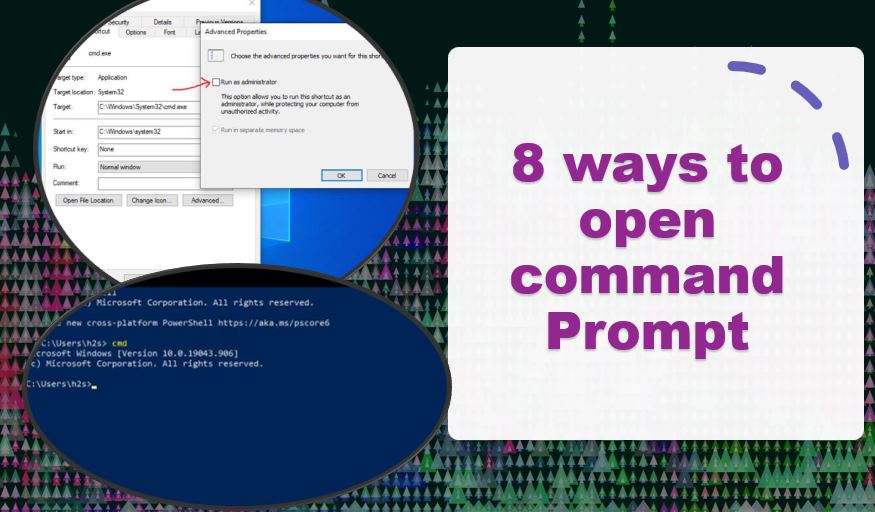

Many of the basic functions in command prompt can be done easily with basic mouse operations and menus, so most end-users will never need to use CMD.
#Get command prompt windows 10 how to
Nowadays most people don’t know how to use cmd because there is often no real need for it. Navigating through the files on a computer was simple when using only the keyboard. The command prompt was most popular in its early days, as the user interfaces were a lot more limited back then. It is not a cross-platform application, as it is native to Windows, unlike it’s big brother, PowerShell which works on many other operating systems. It can be used to interact with the Windows operating system through various built-in commands. It won’t be as in-depth, but contains all the main commands and features you need to learn.Ĭommand Prompt or CMD is a command line interpreter, in which the user interacts with the the command prompt through its command-line interface. If a video format is more your style, you can check out this guide on our YouTube channel. No matter if you’ve never touched the command prompt before or you are an expert at it, you will definitely find tons of useful information in this guide. After that, we will move on to more complex commands and features. We will start off with the basics, like different ways to open it, as well as basic navigation and file modification. You are about to learn everything there is to know about the Command Prompt, also known as cmd or console. That’s why it’s a damn good thing you are here. Most advanced users know a few basic commands, but very few know how to fully take advantage of the Windows Command Prompt. It’s one of those things that you know exists, but most likely have no idea how to use or what it’s for. Edit the Look & Colors of Command PromptĮveryone who uses Windows on a daily basis has definitely bumped into the command prompt every once in a while. Find and Kill Any Running Task (tasklist | taskkill) Scan Entire Drive or Disk for Issues (chkdsk) Check the Integrity of Your Files and Fix Them (sfc) Get a Power Efficiency Report of Your System (powercfg)
#Get command prompt windows 10 drivers
Check Your System Specifications & Drivers (systeminfo | driverquery) Lookup the IP-Addresses on a Nameserver (nslookup) Send Test Packet & Check Connection to Target Address (ping) Show Optimal Route to Target Address (tracert) See All Your Active Connections (netstat) Check IP-Address & Network Information (ipconfig) Few Important Base Commands to Learn in CMD


 0 kommentar(er)
0 kommentar(er)
